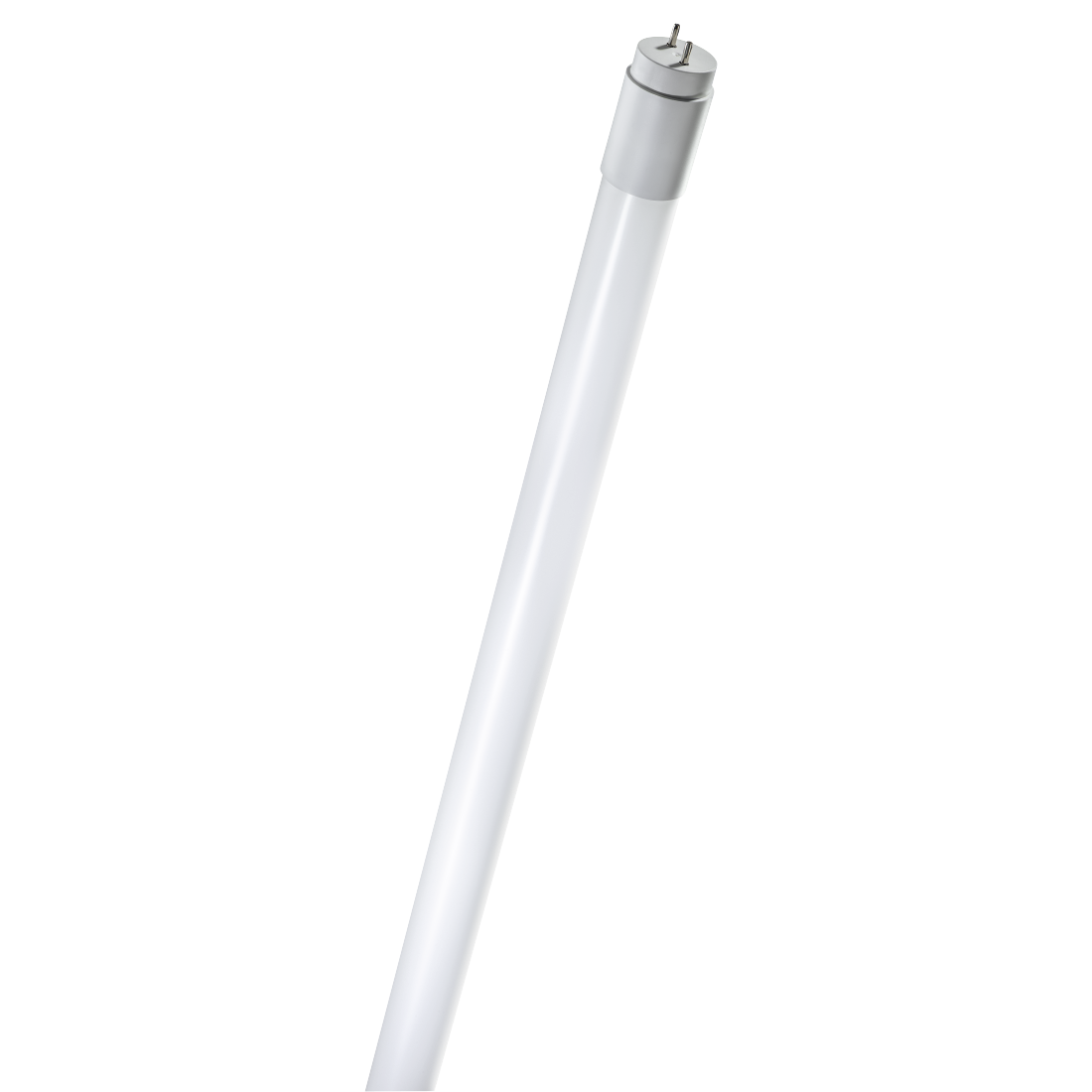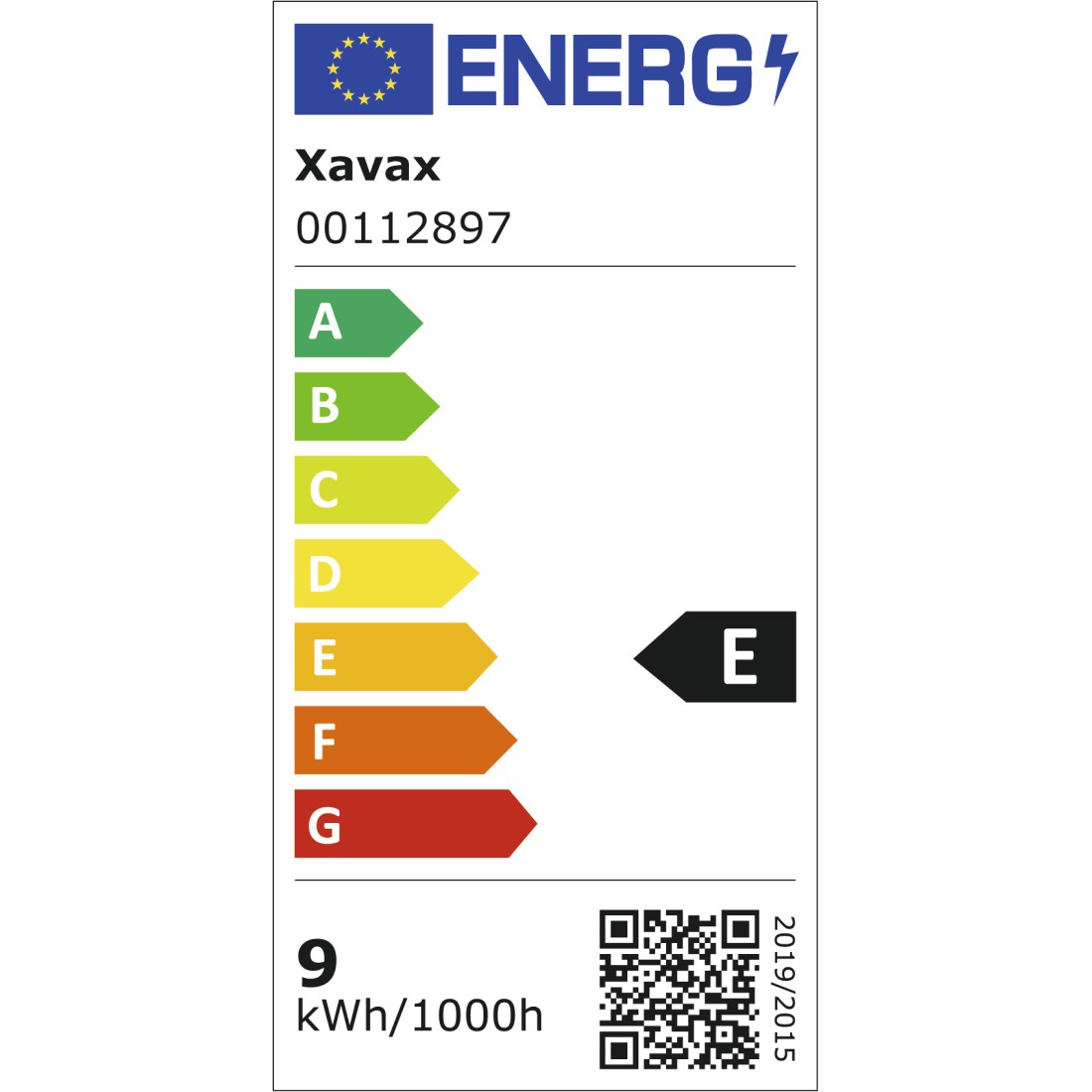× Close



- 1 LED tube
- 1 dummy starter
- 1 instruction manual
| Colour Reproduction Index RA (min.) | 80 |
| Light Colour | Neutral White |
| Beam angle | 200 ° |
| Colour Consistency | 3 ≤ |
| Colour-tuneable light source | No |
| Connected light source (CLS) | No |
| EAR Reg.No. | DE 38720470 |
| Energy consumption in on-mode | 9 kWh/1000h |
| Energy Efficiency Class A to G | E |
| Flicker for LED and OLED MLS | 0.1 ≤ |
| Frequency | 50 Hz |
| L70B50 lifetime for LED and OLED light sources | 15000 h |
| Lighting technology used | LED Lamp |
| Light source | Non-directiona |
| Lumen maintenance factor (LED/OLED) | 93 % |
| On-mode power (Pon): | 9 W |
| R9 colour rendering index value | 13 |
| Shift factor for Pon (min.) | 0,868 |
| Stroboscopic effect for LED and OLED MLS | 0.1 |
| Survival factor (for LED and OLED) | 0.9 |
| Useful luminous flux (Φ360) | 1080 lm |
| Can be Dimmed | No |
| Colour Temperature | 4000 K |
| Design / Diameter / Height | Röhrenlampe T 8 / 28 mm / 600 mm |
| IP protection class | IP20 (Dry Rooms) |
| Lamp socket | G 13 |
| Operating Position | 360 ° |
| Optimal Ambient Temperature | 25 °C |
| Net Weight | 90 g |
| Lamp Current | 65 mA |
| Suitable for Accent Lighting | No - Beam Angle between 120° and 360° (Φuse) |
Only for private use and not for long-term commercial use
Only for use in individual switching (lights have their own starter for each fluorescent tube)
Not suitable for electronic ballasts (lights without starters)
CLB = Conventional Loss Ballast, the most widespread system
LLB = Low Loss Ballast
EB = Electronic Ballast
Any changes to the wiring should only be carried out by qualified electricians. Incorrect installation could result in injury or damage to property.
Before carrying out any conversion work, ensure that there is no voltage.
Any defects due to incorrect installation are not covered by the warranty.
In addition to the power consumption of the LED tubes, CLBs that have not been disconnected/bypassed in particular have a high and unnecessary power loss and can cause high voltage peaks. Voltage peaks reduce the service life of the tubes. The disconnection/bypass must only be carried out by a qualified electrician.
Power loss in LLBs is considerably lower and so disconnection/bypass is not so important.
If a light that has been converted to LED tubes is fitted with fluorescent tubes once again, a fluorescent tube starter will need to be refitted. Every light that has been converted to LED tubes should feature a warning notice next to the starter.
The overall efficiency and light distribution is determined not just by the characteristics of the LED tubes, but also by the construction and characteristics of the lights.